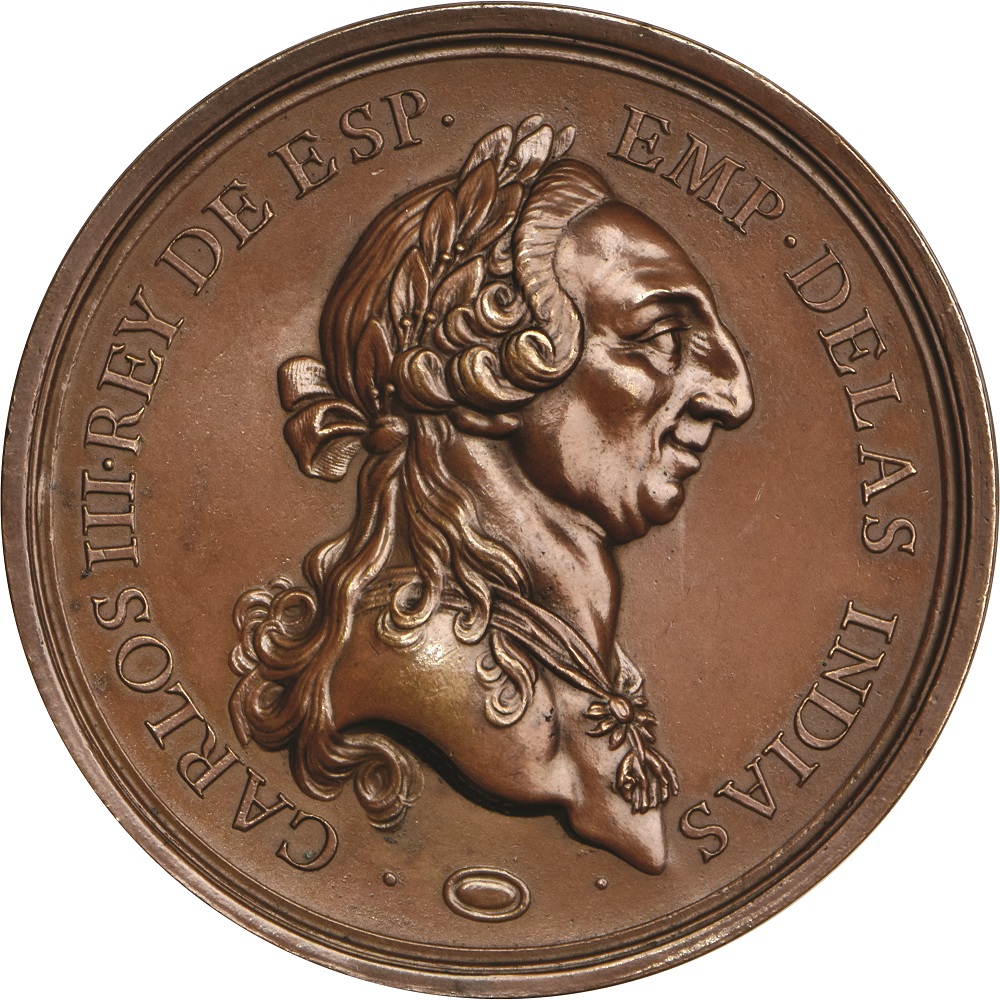Indian Peace Medals
European powers used awards to keep Native allies on their side
Published: February 26, 2021
Last Updated: June 27, 2023

Courtesy of the Haynie Family Foundation
King Carlos III al mérito medal, ca. 1778.
The British soon joined in, coining their first medals in 1714 to commemorate the friendship between Great Britain and Native American peoples. By the middle of the eighteenth century the practice of presenting medals was so common that when Louisiana passed into Spanish hands, the new rulers had no choice but to continue it. In the autumn of 1769 Spanish Governor Alejandro O’Reilly had a meeting with representatives of several Native American groups, during which they asked that the new authorities continue to extend the same benefits and favors that they had received from the French. According to historian Daniel Usner, this meeting concluded with O’Reilly “bestowing medals hanging from a scarlet ribbon around the necks of several Indian chiefs.” The medals given by O’Reilly were ones known as al mérito (“for merit”), first coined in 1764. Some samples of these medals are still found in museums and private collections in the southern United States, and they represent both the authority of the particular chief who received the medal and his group’s loyalty to Spain.
But the 1764 Spanish Indian peace medal had its detractors. In 1771, when Fernando de Leyba, representative of the Spanish crown in Illinois, presented one of these medals to Cazenonpoint, chief of the Quapaws, he refused it and asked instead for the French medal, since it was bigger. To avoid a repeat of such a snub, Governor Bernardo de Gálvez asked for larger medals to be coined. On August 22, 1777, the royal court sent an order to the Royal Mint for the production of a new al mérito medal having a diameter of about two inches rather than the usual one and a half inches.
The design by Tomás Francisco Prieto, official engraver of His Catholic Majesty, is very similar to the old design, the main difference being that the bust of King Carlos III is adorned with the insignia of the Order of the Toisón de oro (“Golden Fleece”) and the coin bears the signature of the artist. This medal is commonly called the big al mérito medal, the first of which were coined in April 1778. Although few have survived, one is located in the Lázaro Galdiano Museum in Madrid, and another was auctioned by Stack’s Bowers Galleries in New York in 2009, selling for $17,250.
The practice of presenting Indian peace medals was so successful that several years after the Spanish picked up the practice, Gálvez had to instruct the authorities in Louisiana that there should be only “one medal chief” per tribe.
Gonzalo M. Quintero Saravia, SJD, PhD, is the author of Bernardo de Gálvez: Spanish Hero of the American Revolution, recipient of the 2019 Distinguished Book Award by the Society for Military History.
